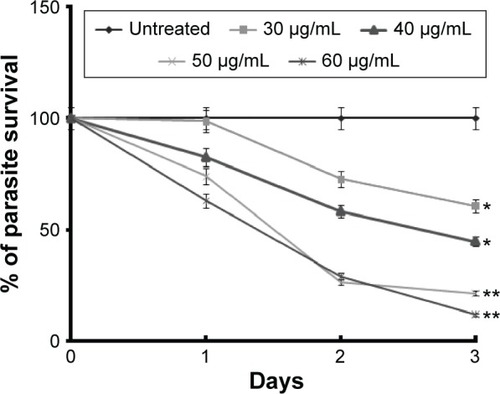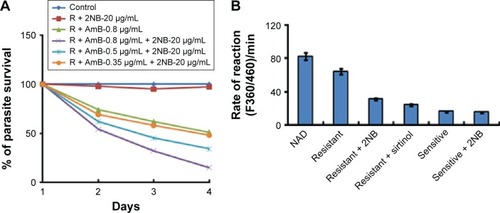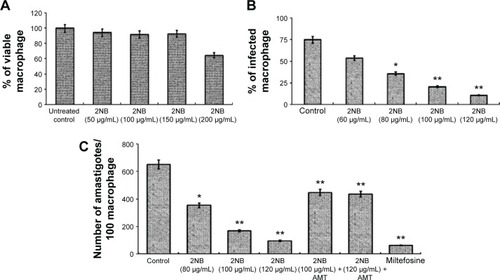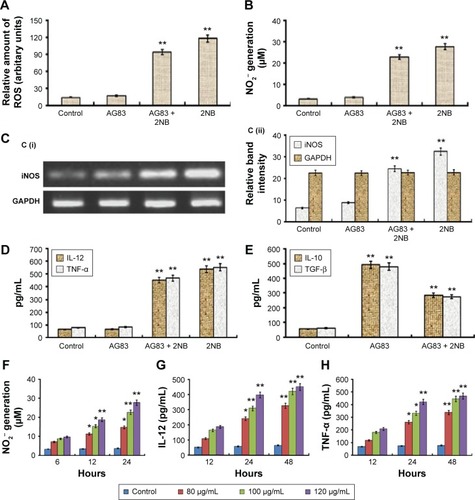Figures & data
Figure 2 Activity of 2-nitro-N-(pyridin-2-ylmethyl)benzenesulfonamide (2NB) against Leishmania donovani promastigotes.
Abbreviation: SD, standard deviation.

Table 1 Reversion of resistant and sensitive phenotype by inhibition with the compound, 2-nitro-N-(pyridin-2-ylmethyl) benzenesulfonamide (2NB), in in vitro AmB sensitivity assay
Figure 3 Modulation of AmB-resistant property of AmB-resistant L. donovani by our compound of interest 2NB.
Abbreviations: AmB, amphotericin B; 2NB, 2-nitro-N-(pyridin-2-ylmethyl)benzenesulfonamide; LD50, 50% lethal dose; Sir2, silent information regulator 2; min, minutes; R, AmB resistant; NAD, nicotinamide adenine dinucleotide.

Figure 4 Macrophage infection assay (ex vivo) to determine the effect of compound 2NB on intracellular amastigotes.
Abbreviations: 2NB, 2-nitro-N-(pyridin-2-ylmethyl)benzenesulfonamide; AMT, 2-amino-5,6-dihydro-6-methyl-4H-1,3-thiazine; SD, standard deviation.

Figure 5 2NB treatment induces ROS and NO generation as well as modulates different cytokines response.
Abbreviations: 2NB, 2-nitro-N-(pyridin-2-ylmethyl)benzenesulfonamide; ROS, reactive oxygen species; iNOS, inducible nitric oxide; mRNA, messenger RNA; RT-PCR, reverse transcription–polymerase chain reaction; GAPDH, glyceraldehyde-3-phosphate dehydrogenase; IL, interleukin; TNF-α, tumor necrosis factor α; TGF-β, transforming growth factor-β; ELISA, enzyme-linked immunosorbent assay; SD, standard deviation.


